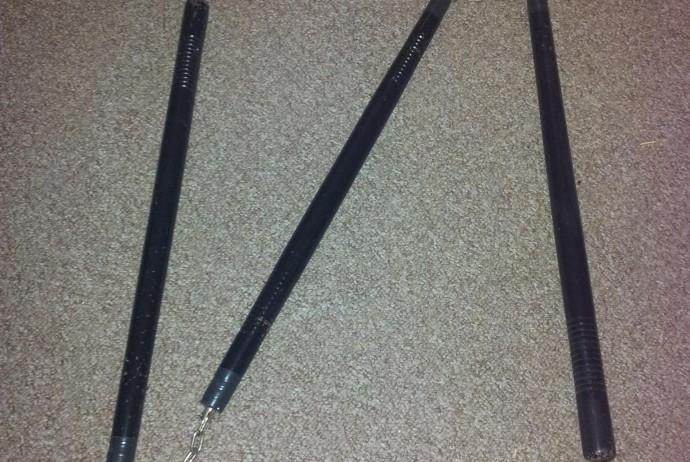Nunchaku’s Distant Cousin
The three section staff started life in China where it was known as the sanjiegun in Mandarin, ‘gun’ meaning staff. Once it found its way to Okinawa, it became known as the sansetsukon, and they even created a couple of training kata, ‘sansetsukon dai ichi’ and ‘sansetsukon dai ni’. Like nunchaku, the three section staff is part of the ‘bo’ or staff family, and is a jointed weapon. It can, therefore, be seen as a distant relative of nunchaku.
The challenge of jointed weapons
The thing about jointed weapons is that they lend themselves very well to sensitivity training because the user learns to feel how the weapons respond to forces. The three section staff, like nunchaku, is also unforgiving; if the move is not carried out correctly, the weapon will be dropped, will not be where it is supposed to be for the next part of the routine or will hit the practitioner. This feedback means that users who have the patience, bravery and perseverance also have the potential to improve quickly. Other weapons such as bo, katana (sword) or tonfa (side handled baton) can be used incorrectly and the user will get away with it because these are objects are static and remain in the performer’s hands.
Multi-range weapon
Three section staff has an incredibly long reach and can be used for long-range, mid-range and short-range defence and attack. For those taking advantage of its full reach by swinging out two sections of the staff from the centre, they need to be aware of the time taken to regain control after the swing.
The mid-range and short-range moves usually involve holding on to the outer sections of the staff which leaves the central part suspended between them. These batons can be used like short-stick (tai bo) but the moves can be tricky as there’s a good chance the ends and chains of the mid-section will hit the user’s hands and wrists.
In the video below, I give a brief demonstration of how the sanjiegun can be used as a short to mid-range weapon, long-range weapon, and then finish with some more ambitious manoeuvres where the outer batons are both allowed to swing freely.
PLEASE DO NOT TRY ANY OF THE MOVES YOU SEE IN THESE VIDEOS AT HOME. THIS IS A DANGEROUS WEAPON. IF YOU ARE GOING TO TRY ANY OF THESE MOVES, PLEASE TAKE NOTE OF THIS DISCLAIMER.
For those of you who want to focus more time and energy on this weapon (I am tempted to, myself), there is plenty of material on the net and I found a very clear Youtube clip showing an excellent performance of sansetsukon no kata. Enjoy!
Not for beginners
I am an absolute beginner in this weapon but I have got away with using it because of extensive practise and experience with other weapons such as nunchaku and bo. If you have not used these weapons before, I would strongly suggest you try them first before you move onto the three section staff.
If you like what you see and want to know more about tuition in nunchaku, get in touch.


 Follow
Follow